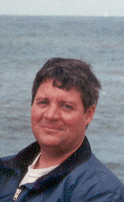
Location: Stanford University
see Map showing Mitchell and GeoCorner Room 320
This will be the 393rd meeting since 1954

The Colorado River is a large, youthful, unequilibrated continental drainage system that was established abruptly between 5 and 6 million years ago in conjunction with Gulf of California rifting and establishment of the modern river course through the western Grand Canyon and lower Colorado river region. New detrital zircon U-Pb analyses provide insight into details relating to the cause, timing and consequences of river inception. These samples encompass (1) the modern Colorado River delta, (2) major tributaries including the Green, "Grand", San Juan, Little Colorado and Gila rivers (3) late Miocene to Pliocene sediments along the lower Colorado (4) late Miocene to Pleistocene deltaic and fluvial sediments of the Imperial and Palm Spring Groups in the western Salton Trough, and (5) late Miocene- early Pliocene Bidahochi Formation of eastern Arizona. Data from the western Salton Trough and modern delta yield strata yield remarkably homogeneous age distributions that indicate there was little evolution in Colorado River sediment composition since 5.3 Ma. Detrital zircon is dominated by a mix of local southwest US cratonal basement (1.7 and 1.4 Ga) plus reworked supracrustal sequences of the Colorado Plateau that provide Neoproterozoic, 1.1 Ga, and early Paleozoic zircons. The strong homogeneity of the detrital zircon record from late Miocene to the present combined with the fact that the most easterly tributaries most strongly resemble the delta is consistent with the 'lake spillover model' for inception and integration of the modern Colorado River drainage. Abrupt integration of the lower Colorado River after 5.6 Ma is clearly recorded by detrital zircon ages from the laucustrine Bouse Formation and Bullhead alluvium aggradational package. Fluvial-laucustrine deposits of the Bidahochi Formation may represent a lake that overtopped the Kaibab upwarp to initiate western Grand Canyon incision.

Marty Grove earned his Ph.D. from the Department of Earth and Space Sciences, University of California, Los Angeles, 1993, his M.S. from the Department of Earth and Space Sciences, University of California, Los Angeles, 1987, and his B.S. from the Department of Geology, California State University, Long Beach, 1983.
He is Ion Microprobe Facility Manager, Dept. Earth and Space Sciences & IGPP, University of California, Los Angeles. See http://sims.ess.ucla.edu/mgrove.htm for his Faculty Web page.
Reservations: The preferred way to make reservations is simply to email John Spritzer at jspritzer@usgs.gov by November 30, tell him you will attend, commit to pay, and bring your payment to the meeting. John always emails a confirmation; if you don’t get one, assume email crashed yet again and email him a second time. A check made to “PGS” is preferred, payable at the meeting.
If you want to pay in advance:
Everyone (including Stanford folks now) Please make dinner reservations by November 30. Contact John Spritzer, at U.S. Geological Survey, 345 Middlefield Road, MS-973 Menlo Park, CA 94025, Tel.: (650) 329-4833. Send check made out to “PGS” to John.
Dinner is $30.00. Includes wine (5:30 to 6:15 PM.) and dinner (6:15-7:30 PM.).
For students from all universities and colleges, the dinner, including the social 3/4-hour, is $5.00 and is partially subsidized thanks to the School of Earth Sciences, Stanford University (Note, no-show reservations owe the full price).
Doris, whose wonderful crew prepares our meals, asked that we let you know that people who are late RSVPing and people who show up without a reservation will be welcome but that they will be eating on paper plates with plastic utensils (food supply permitting).
Dues for Academic Year 2007-2008 ($10.00) should be sent to John Spritzer, U.S. Geological Survey, 345 Middlefield Road, MS-973 _Menlo Park, CA 94025. John’s phone: (650) 329-4833.
Officers: Tom Moore, President; Keith Howard, Vice President; Mike Diggles, Secretary; John Spritzer, Treasurer; Elizabeth Miller, PGS Stanford University Coordinator

Date created: November 26, 2007
Last modified: November 26, 2007
Created by: Mike Diggles, Webmaster-Secretary, PGS.